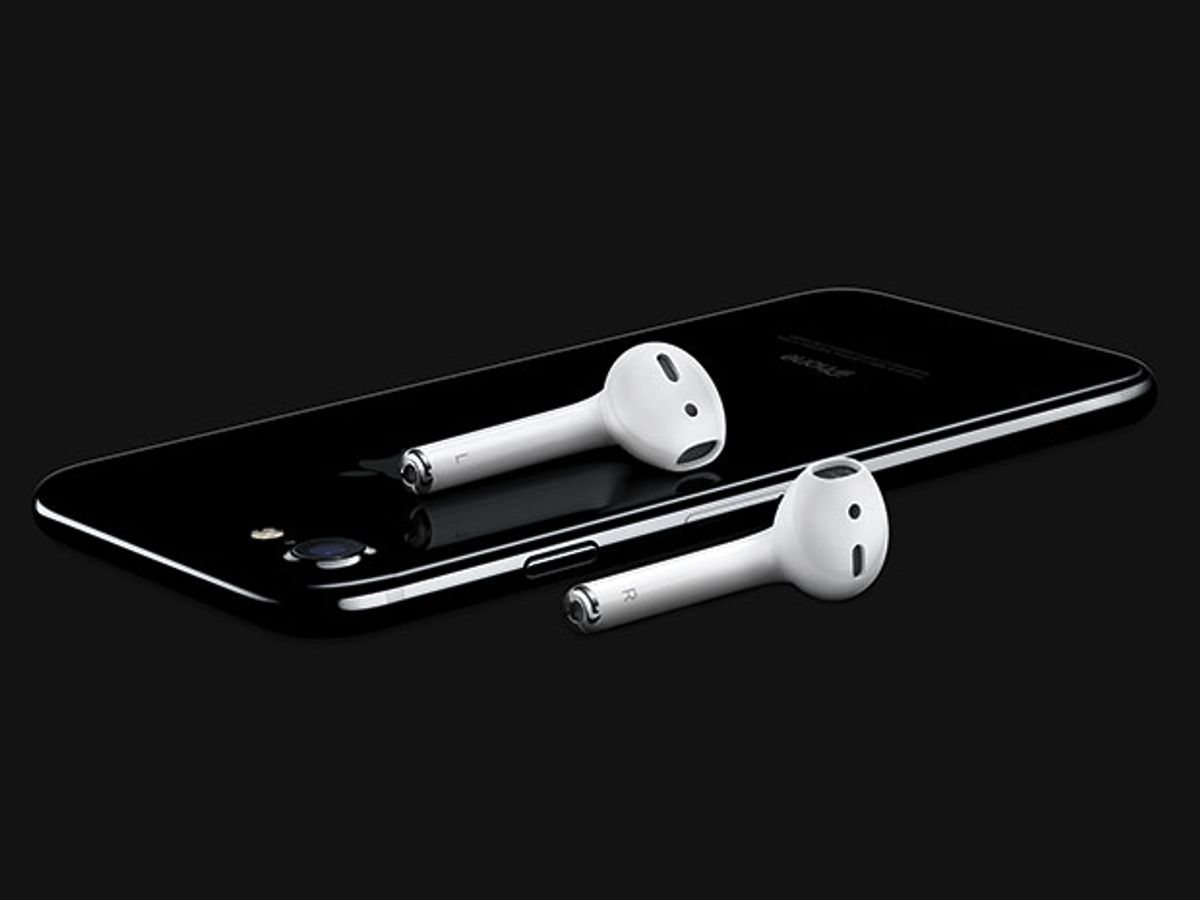The iPhone 7 is officially on its way, and the new model has one conspicuous absence: it lacks the 3.5-mm analog audio jack that customers have used to plug in headphones or speakers since the first iPhone was released in 2007. Without it, Apple users will have to switch to wireless headphones or digital ones that plug into the iPhone’s Lightning cable port. That's the same port used to charge the device or connect it to a laptop.
Apple is not the first smartphone manufacturer to remove the familiar analog audio jack from its phones—the Chinese company LeEco rolled out three such models last spring and then rival Lenovo debuted the jackless Moto Z earlier this summer. After Apple’s announcement, even more manufacturers are expected to follow suit.
For other companies, removing the audio jack typically means delivering sound through digital headphones that plug into USB ports at the bottom of the device. But since Apple’s Lightning port is proprietary, removing the analog jack from the iPhone 7 means that customers must use wireless or Lightning port-compatible products to connect their headphones. The inconvenience of buying compatible headphones, piled atop concerns about electronic waste and the spotty quality of many wireless Bluetooth headphones, stirred up complaints when the first rumors of the audio jack’s removal hit.
Phil Schiller, senior vice president for marketing at Apple, revealed the new design on Wednesday and said the analog jack had taken up too much valuable real estate. “Maintaining an ancient single-purpose analog connector doesn't make sense because that space is at a premium,” he said from on stage at the iPhone 7’s unveiling in San Francisco. He said switching to a digital port opens up the possibility of pairing more functionalities—including noise cancellation and activity monitoring—with audio streams.

For those who want to stick with their analog headphones or earbuds, there are plenty of digital-to-analog converters for sale that plug into the USB ports of other smartphone models (several of which were recently reviewed by IEEE Spectrum). Apple has said it will ship an adapter and a pair of Lightning port-compatible EarPods with every new iPhone 7 it sells. In October, the company will also begin selling brand new wireless headphones called AirPods for $159.
Once they make the switch, the audio quality that users can experience through a Lightning port connection should be better “in virtually all objective ways” than that which they received through the old analog output, says Rob Maher, head of the electrical and computer engineering department at Montana State University in Bozeman, Mont.
This is partly because analog headphones rely on a digital-to-analog converter (DAC) installed within the iPhone itself to process sound. In new digital models, designers can move the DAC into the headphones themselves, which gives them much greater freedom to improve sound quality.
Digital headphones also operate from their own power source (such as batteries) while analog headphones have largely been powered by the device to which they are connected. To power a pair of analog headphones, the device must convert digital data to an analog signal of enough amplitude to drive the speakers.
“The choices about digital-to-analog conversion, signal levels, headphone drivers, and bandwidth can be made by the external audio product designer” instead of the handset maker, says Maher.
That means consumers, in theory, should have more choices about the quality and cost of the audio they wish to enjoy. However, William Stofega, mobile device analyst for IDC, points out that Apple's conversion from analog to digital audio delivery doesn’t change the fundamental challenge of storing high-quality audio on mobile devices—compression.
And could the lure of customizable audio quality really outweigh the inconvenience of replacing earbuds for the average consumer? That’s still unclear. “Any company which drops a widely used feature must deliver a compelling consumer benefit because of the change,” says Ian Fogg, a mobile analyst at IHS Markit.
Maher at Montana State doubts that most customers will care all that much about high-quality smartphone audio. “I think most people are probably satisfied with the audio quality they get from their existing earbuds, at least for the casual walk-around listening most people do with their smartphones,” he says.
In addition to the removal of the audio jack, Apple also announced that the iPhone 7 will have a longer battery life than the iPhone 6 (by one hour on average), as well as an improved camera and stereo speakers. Its price will start at US $649.



